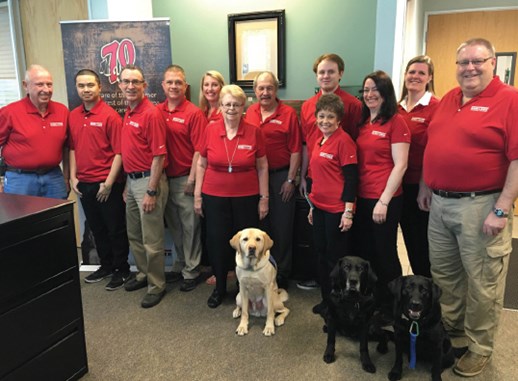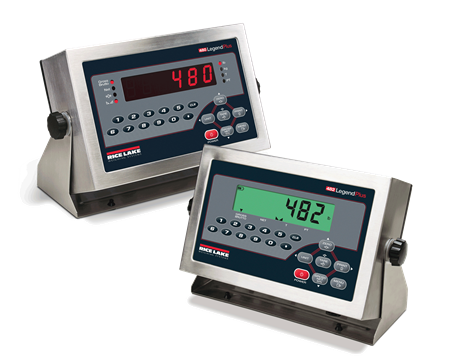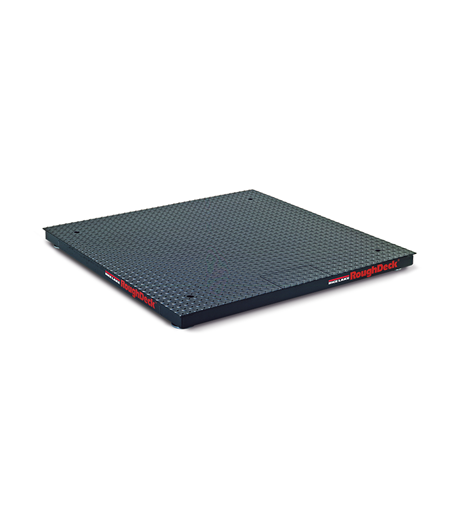Is the website displaying in the correct language? Please confirm or select a different language.
Your region has been set automatically. Please confirm or select a different region.
The Nose Knows
On a New York night in 2001, Mark Ruefenacht’s life was saved by a guide dog in training.
Mark Ruefenacht is an insulin dependent diabetic, and that night in the city, Mark made a crucial error —he did not check his blood sugar before going to sleep.
Publish Date: 07/15/2016
Unbeknownst to Mark, he was slipping into a severe low blood sugar episode. Most likely, his low blood sugar caused a seizure in his sleep, and a puppy Mark was training to be a service dog for Guide Dogs for the Blind probably recognized Mark was in distress and woke him from his hypoglycemic haze.
Mark recovered from this terrifying event, but it also sparked an idea to merge two aspects of his life into one experiment. As a forensic metrologist, Mark was working on breathalyzer technology. Mark also dedicated a large amount of time training service dogs. His experience in New York brought the two pieces of his life together: Mark began exploring a dog’s ability to decipher human breath, in particular, the chemicals associated with hypoglycemia.
Using dogs in Mark’s experiments with hypoglycemia was a natural fit. 40 percent of service dogs from Guide Dogs for the Blind are employed to assist those with visual impairment from diabetes. Mark began his volunteer work training guide dogs in 1996 because of the probability he would need a guide dog in the future due to diabetic blindness. Mark wanted a way to give back to the organization he believed would provide him with life-changing services as his diabetes progressed.
Mark’s episode in that New York hotel room, his work with Guide Dogs for the Blind, and his experience in forensics metrology culminated into his hypothesis that he could train a dog to detect hypoglycemia from his breath and sweat. But most importantly, Mark wanted to determine if a dog could detect hypoglycemia (low blood sugar) in his breath, as well as train the dog to detect hypoglycemia in another person’s breath and sweat. Could training a diabetic alert dog be repeatable?
Because of Mark’s familiarity with training Guide Dogs for the Blind, it was a natural fit that his hypoglycemia alert dog pilot, a yellow labrador retriever named Armstrong, would be donated from the organization. Dogs that enter the Guide Dogs for the Blind training program go through an extensive process. The dogs need to develop very particular skills, exhibit innate desirable characteristics, and pass a long period of exposure training from a very young age. In addition to their training, guide dogs need to be kept in peak physical condition. Monitoring the dogs’ health, including their weight, is vital to a long and healthy life of service for those in need.
Armstrong was repurposed from the Guide Dogs for the Blind training program because of a characteristic that would prove incredibly useful for Mark—Armstrong was too sniffy. For a guide dog, wanting to sniff and play is not ideal. But for a dog being trained to detect changes in blood sugar from a person’s scent, sniffiness is an asset.
After three years of research and working on his hypothesis with Armstrong, Mark officially proved he could train a dog to detect drops in blood sugar from the chemical changes in a person’s scent, and that this scent was universal among diabetics. This breakthrough meant Armstrong could detect Mark’s changes in blood sugar, as well as another diabetic’s blood sugar changes. In 2004, Mark developed the organization Dogs4Diabetics and began fundraising to share his research and provide certified Medical Alert Assistance Dogs for other Type 1 diabetics.
The dogs at Dogs4Diabetics are trained to alert their handler when the dog identifies the scent of a low blood sugar level, typically below 70 mg/dL, so the handler can treat the low sugar level before suffering the symptoms of hypoglycemia and potential incapacitation. Each dog is trained to alert their handlers with a specific action. This action could be nudging the handler with their nose or paw, or by holding a soft toy, called a bringsel, in their mouth. The toy hangs from their collar and is easily reached by the dog to alert their handler. These dogs are specifically trained for scent discrimination with an attuned nose.
How are dogs able to detect the chemical changes of low blood sugar when, to humans, the change is odorless? Dogs have more than 200 million scent sensors in their nose. These millions of sniff sensors are able to individually identify particular scents in parts per trillion. This feat out-performs current technology’s best ability to differentiate scents in parts per million. To keep their noses (and the rest of their bodies) in prime condition and their brains sharp, dogs at Dogs4Diabetics are kept on a strict exercise and health regimen.
Since day one of Dogs4Diabetics, a vital piece of equipment has been used to ensure Armstrong and other diabetic alert dogs in training are performing at their optimal level—a Rice Lake RoughDeck floor scale. The dogs at the Dogs4Diabetics training facility are taught using positive reinforcement. If a dog correctly alerts its owner of a change in blood sugar, the dog is rewarded with a positive interaction, usually a tasty treat. Handlers then account for these treats when it comes time to feed the dogs their daily meals.
Over-feeding an alert dog or not ensuring it receives proper physical activity can lead the dog down a path of lethargy and poor health. If an alert dog is too tired or lethargic from overeating, it may not be as motivated to do its job—alert its handler to hypoglycemia. “Once an alert dog becomes overweight, it gets lethargic and their motivation to alert just isn’t there,” says Mark. “They become lazy dogs. Dogs are trained with positive reinforcement and are treated often, and those treats needs to be deducted from dinner to ensure the dog stays fit.” The RoughDeck floor scale provides Mark information to accurately nourish and work the alert dogs for long healthy lives.

The dogs being trained for Dogs4Diabetics are already accustomed to structured eating habits and training. Since the creation of Dogs4Diabetics, all of the diabetic alert dogs have been provided by Guide Dogs for the Blind, just like Armstrong. These dogs also tend to have traits like Armstrong: sniffy and playful demeanors ideal for scent detection work.
Keeping fit and active is an inherent part of an alert dog’s life. The dogs go everywhere with the client; the dogs don’t need that daily workout walk because it has been on the go all day long. Dogs4Diabetics dogs are usually much more active than other domesticated dogs, and after the end of the work day, they are tired, just like their owners after a long day of work or school.
When adult diabetic alert dogs successfully complete training, they are issued to clients who have also been training with the dogs extensively at Dogs4Diabetics.
The dogs are leased to their clients on certain conditions that the client upholds the dog’s health and training. “Dogs4Diabetics has a two-way contract, and a requirement is that the dog is always within 10 percent of their issue weight—the weight they left their training at,” says Mark. Issued dogs are brought in on a yearly basis to weigh-in on the calibrated RoughDeck floor scale. This check-up ensures the dog’s health is on track and that they are within 10 percent of their issue weight. “What I like best about the RoughDeck is its reliability,” says Mark. “When you get a Rice Lake scale, you know it will work for years.”
To Mark, the best part about founding Dogs4Diabetics are the connections with clients. “I get to see the diabetic who came in to the program, and watch their life literally change because they have so much more control over their diabetes,” says Mark. “I also love working with the dogs. They give unconditional love, loyalty and forgiveness. There are so many traits in dogs that people aspire to achieve and these dogs already have them. We call them powerful partnerships and the power is in the bond. I call that the human-dog relationship. Both sides have to work to make it positive.”
A relationship requires work. The dogs at Dogs4Diabetics work hard, and the clients do, too. “The work that goes into the relationship goes way beyond a bond,” says Mark. Dogs4Diabetics aims to help diabetics have more control of their health by using a diabetic alert dog. Rice Lake’s RoughDeck floor scale in the Dogs4Diabetics training center is just one piece of the entire foundation that plays a role in keeping the dogs physically fit and ready to sniff. A healthy and successful diabetic alert dog from Dogs4Diabetics embodies the company’s motto: “Our Dogs Save Lives.”
More information about Dogs4Diabetics can be found at www.dogs4diabetics.com and D4DImAlive.com.
Dogs4Diabetics | Engaging our community and our dogs to empower people living with diabetes to live relentlessly awesome lives, in safety.
MORE ABOUT MARK
Mark grew up in a family of metrologists. The family business, Heusser Neweigh, is a metrology lab located in Concord, California. Heusser Neweigh has been in operation since 1906, and today, Heusser Neweigh is part of the Rice Lake Weighing Systems family of services.
As an adult in the business, Mark expanded his metrology studies and specialized not only in weights, balances and scales, but also in becoming an expert in forensic metrology with firearms and measurements related to illegal substances. Mark has a specialty in the science behind breathalyzers, both in breath and blood alcohol measurement.
Mark uses the principles of metrology, and applies them to scent discrimination work with statistics. The more measurements, the more confident we can become with more data points,” says Mark. “Law enforcement dogs have a certain amount of correct passes, but how many data points do they have? If you give a dog five runs and it succeeds four times, that’s an 80 percent success rate. But if we are doing the test 1,000 times, and the dog is still achieving 80 percent, the confidence is far greater.”
Dogs4Diabetics is the first organization to be accredited with scent discrimination work for dogs relating to diabetes. Metrology became the basis and foundation of the training program, and Mark enhanced it with quality assurance, ethics and values.
Heusser Neweigh provides Mark’s primary career as a metrologist. However, he is also a contract employee for NIST and trains others in the industry on calibration principles and NIST standards. In addition, Mark works with different forensic laboratories with the goal of becoming accredited. NIST currently does not have any guidelines for canine scent discrimination and measurement related to human diseases, but it’s a personal pursuit of Mark’s to see it classified as a standardized science.
What’s next for Mark and Dogs4Diabetics? A new program called Diabetes Buddy Dogs has started at Dogs4Diabetics with a focus on using dogs to assist children with diabetes. The dogs are custom trained to meet the needs of the diabetic, whether it’s alerting a parent if a child’s insulin pump alarms, bringing low blood sugar supplies to a diabetic that is incapacitated, or providing comfort to a child when they receive injections and blood sugar checks. Diabetes Buddy Dogs can perform their skills at home, helping comfort and assist all people, and especially children, with their diabetes.
Mark is also working on expanding the opportunities for current diabetic alert dogs. “I am working on cross training dogs as Guide Dogs for the Blind and diabetic alert dogs,” says Mark. “It is still in the experimental phase, though. The dog would need a lot of training to be able to guide through traffic, listen to the handler and alert for changes in blood sugar.” Great things are happening for Dogs4Diabetics, and the future of scent discrimination is open for possibilities, one sniff at a time.
Subscribe to Rice Lake Magazine
Sign in or create a Rice Lake website account to request a Rice Lake Magazine filled with application stories like this one be sent to you.
Account Sign In Create an Account


 My Account
My Account



